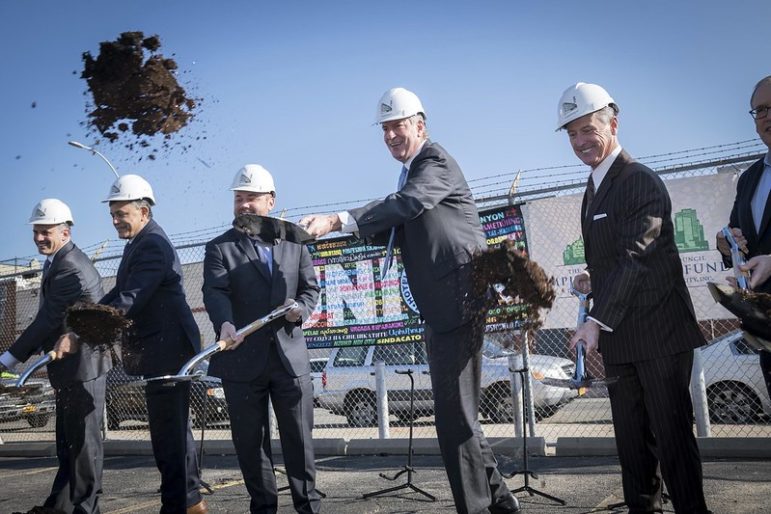
As Mayor de Blasio neared the end of his sixth year in office in 2019, it seemed unlikely he’d reach the goal he set early on of rezoning 12 to 15 neighborhoods to create new density and a larger supply of affordable housing. But with six rezonings completed, two additional proposals nearing formal review and one rezoning study in the works, it seemed at least that the mayor would be able to point to significant progress toward that target.
Last month, however, a state judge annulled the 2018 Inwood rezoning, citing flaws in the environmental review. Early this week, the two Councilmembers who had shepherded a neighborhood planning process in Bushwick shut down consideration of a rezoning there because City Hall rejected a community plan in favor of its own version. And on Wednesday, the chairman of the Council’s land-use committee said he opposed rezoning Southern Boulevard in the Bronx, which the administration is currently studying.
While the Inwood ruling is under appeal and could be reversed, the rezoning of Gowanus still seems to be on track, and plenty of affordable housing has been created outside of zoning changes, the developments are a blow to de Blasio’s most significant policy. They come amid new scrutiny of the mandatory inclusionary housing mechanism, another key tool in the mayor’s affordability program.
On Wednesday’s Max & Murphy Show on WBAI, Matthew Murphy—a former official at the Department of Housing Preservation and Development who now leads the NYU Furman Center—and Antonio Reynoso, one of the two Councilmembers behind the Bushwick Community Plan, discussed recent developments and their implications for the larger housing plan.
Reynoso, who partnered with Council colleague Rafael Espinal on the Bushwick zoning effort, outlined what he saw as the differences between the Community Plan and the city’s. The community approach would permit as much market-rate development (up to 6,000 new units) as is currently permitted in Bushwick, but force that density from mid-blocks to major corridors. The only new housing capacity it would add would be 2,000 units of affordable housing. The city’s plan would permit 9,000 or more units of new market-rate housing and generate around 1,800 units of affordable housing.
The city’s plan gets the balance between market and affordable wrong, Reynoso says. Just as important, he argues, the city’s decision to reject a community plan five years in the making represents a rejection of the kind of community engagement that City Hall has said it values.
Reynoso on the Bushwick Blowup
“The administration lost an opportunity to finally push a rezoning in which a community had the opportunity to self-determine itself and move through a process,” Reynoso said. “It could have been a win-win for this administration, for the City of New York, but the mayor is going to leave with a black eye on a legacy related to affordable housing that is comparable to [Mayor] Bloomberg.”
The result of the roadblock, of course, is that developers will be able to build those 6,000 units allowed under current zoning without any affordable housing mandate. According to Reynoso, however, that is a better path than the one City Hall was offering.
“Both scenarios are bad,” he said. “The city scenario is worse. The city scenario would spur development at a faster rate than a no-action scenario. If the development is going to happen, the slower snail pace in Bushwick is more appropriate than the accelerated development projects that would happen under the city’s plan. It’s the lesser of two evils.”
Murphy, who served at HPD from 2011 until April of last year, says the tensions that broke into the open in Bushwick are familiar.
“There is concern of residents of what the growth of their neighborhood means for them. That translates into a general opposition to rezonings, new development, new affordable housing development,” he said. “With the city looking at its overall housing situation and how it plays out in different neighborhoods, and the overall shortage the city has, there’s such an intense tension built in there. It’s not surprising that when there’s a conversation around rezoning, the community organizes to stem off what they see as the negative implications of that rezoning and the city would just hunker down and say ‘We’re thinking about this as a city.’ There is a balance here between what the citywide need is versus the community perspective.”
Murphy puts the rezoning debates in context
The big picture, Murphy (who is no relation to your correspondent) said, is that the city is not building enough housing. “Our vacancy rate is 3.6 percent so 36 out of 1,000 units are vacant at a given time. When you go under $800 dollars a unit, that vacancy rate is .9 percent so it’s 9 out of 1,000 units. That’s so incredibly low that there is no opportunity for competition for renters.”
The problem is that adding new supply doesn’t address that shortage in a direct or visible way.
“When a new building is built … the most immediate benefactor isn’t necessarily a low-income household or a moderate income household,” he said. The rents in the new place might not work for those families. In theory, as more affluent renters occupy the new building, they yield other apartments that less affluent families can move into.
In theory. “When you see a new building built across the street, and you see the rents on that building, you’re not thinking ‘My rent is going down because of that building.’ This is the tension you see in this city-wide policy making versus the local.”
Full show of January 15, 2020
With reporing by Anika Chowdhury








